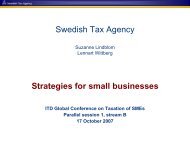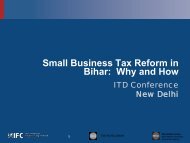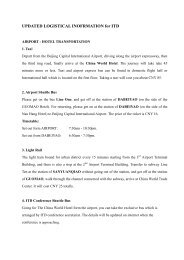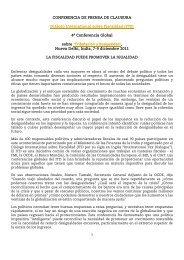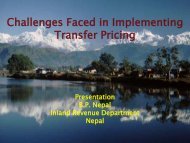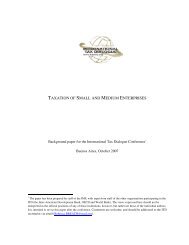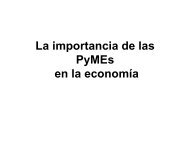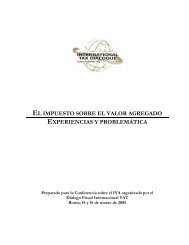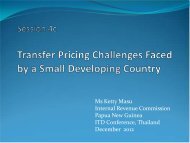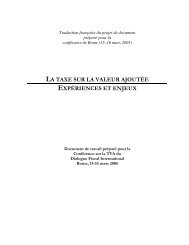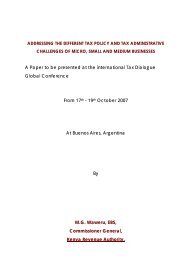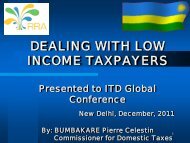Arcotia Hatsidimitris - International Tax Dialogue
Arcotia Hatsidimitris - International Tax Dialogue
Arcotia Hatsidimitris - International Tax Dialogue
You also want an ePaper? Increase the reach of your titles
YUMPU automatically turns print PDFs into web optimized ePapers that Google loves.
2. SELECTING THE RIGHT CASES – 21<br />
Information sources – tax returns, accounts, transfer pricing documentation and questionnaires<br />
The starting point for risk identification is usually a review of the tax returns and accounts of the<br />
relevant MNE. Many countries also require that taxpayers prepare a package of transfer pricing<br />
documentation, including basic factual descriptions of transactions and operations, relevant financial<br />
data, and economic analysis confirming the arm’s length nature of the transfer prices charged. Where<br />
such documentation exists, it can form a basic starting point for a transfer pricing risk assessment. In<br />
some countries it is possible to discuss difficult transfer pricing issues with the tax administration prior<br />
to the filing of the return, which ensures that those issues are identified without any delay 2 .<br />
Some tax administrations require MNEs to supplement their tax return with a completed<br />
questionnaire that provides additional information about transfer pricing. In Denmark, for example,<br />
completion of the questionnaire (Annex 1) is mandatory where related party transactions exceed a<br />
specific monetary limit (currently 5 million DKK = $0.97 million/£0.56 million). Denmark uses the<br />
responses to the questionnaire it requires businesses to complete as the basis for a risk assessment<br />
process that is partly automated. A fuller description of that process is included in Box 1 below.<br />
Others require MNEs to complete a transfer pricing questionnaire only after an initial review of<br />
the tax return and accounts by the tax administration. For example, South Africa also issues<br />
questionnaires (see Annex 2) but only after an initial review of the tax return suggests that there may<br />
be a transfer pricing risk to address. These questionnaires ask for additional information, including<br />
details of transactions with related entities in low tax jurisdictions, to help complete the risk<br />
assessment process. Other countries, for example France, rely solely on their own assessment of<br />
transfer pricing risk based on the accounts, tax returns and other information they can access without<br />
making formal requests to MNEs. Annex 3 provides an overview of the approach that France takes to<br />
transfer pricing cases, focusing particularly on the early stages. From that it can be seen that the<br />
information in the tax return is supplemented by a systematic review of information available from<br />
other sources within the tax administration, such as information provided about any “controlled<br />
foreign companies”, and information available from external sources.<br />
DEALING EFFECTIVELY WITH THE CHALLENGES OF TRANSFER PRICING © OECD 2012



